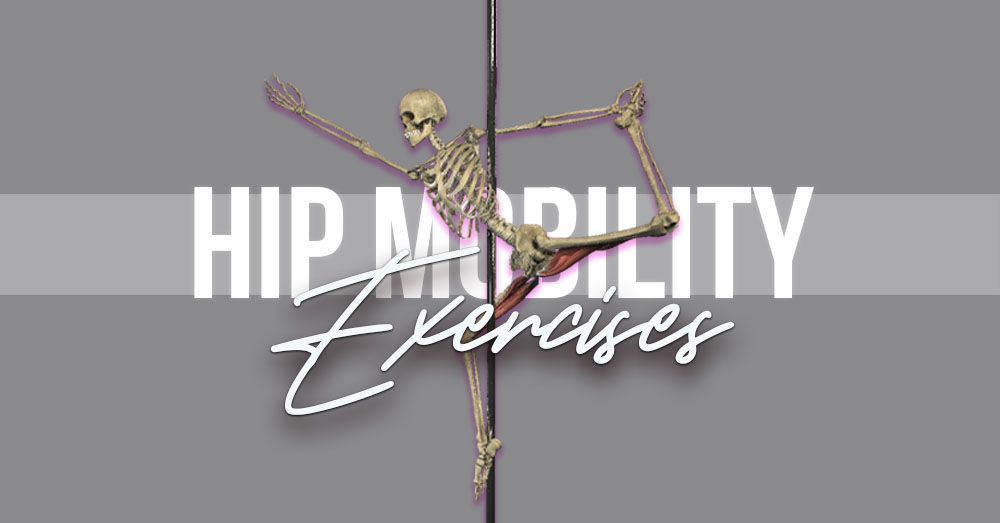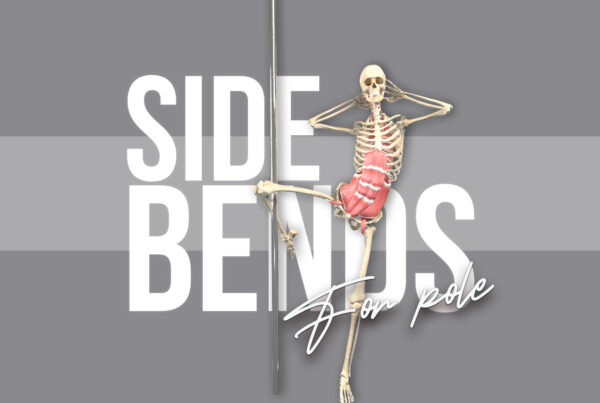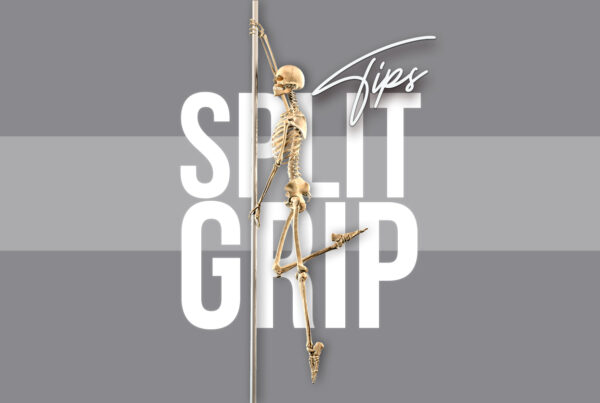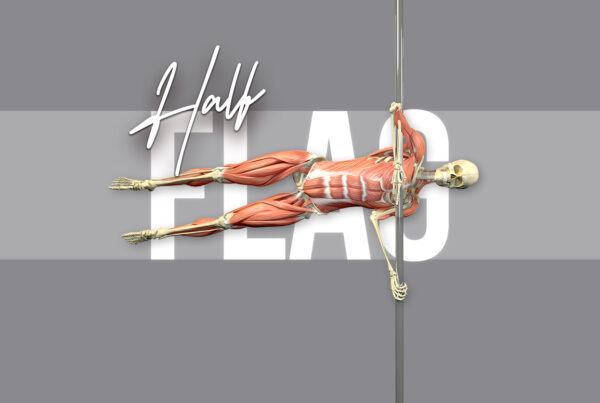The Ballerina is often referred to as the ‘Twisted Ballerina’ for good reason.
If you’ve ever attempted this trick, you’ll be well aware of the amount of spinal rotation required to reach your top arm back around the pole. Yup, the Ballerina is well deserving of its ‘twisty’ accolade! 10 out of 10 on the ‘bend your body around the immovable object’ scale!
But like all pole tricks, there are multiple components to the Ballerina.
You can explore some of those in my previous post on the Twisted Ballerina – featuring one of my first ever animation vids, brought to you back in the chaotic summer of 2020. Yikes.
Inside leg positioning for the #pdballerina
We know that spinal rotation is one of those components, but have you ever considered how the positioning of your inside leg and pelvis might play a role in your ability to access this movement, too?
For the ins and outs of that, check out my previous post: Is your hip mobility holding back your ballerina? Or watch the speedy (less than 90 seconds) video below for a quick run-down…
Improving hip external rotation and abduction
If you’re struggling to land your Ballerina and suspect that limitations in hip rotation or abduction strength/mobility could be holding you back – you came to the right place!
Below are some of the exercises I’m currently using to help my clients improve strength and mobility in these areas.
*All exercises should form part of a planned workout after a full warm up. At the end of this post you’ll see my general recommendations on reps/sets and some suggestions on how to programme these exercises into a workout!*
Holy hip mobilisation – 3 x off the pole exercises for the Ballerina!
Exercise 1: Hip abduction eccentrics
Eccentric movements like this are really useful in flexibility training. What I mean by ‘eccentric movements’ = loading the muscle as it lengthens!
For each repetition, I’m doing 5 second lowers, with a 5 second pause at the end point, then using my hands on the floor to help me back up to the start position. All the adductor magic is happening on that slow eccentric and the end range hold, so really focus on that timing!
Note: don’t go into your end-range straight away! Build that up slowly over a few weeks, especially if training in this position is new to you!
Exercise 2: Side leg lifts
As our goal is not only to increase flexibility (exercise #1 is great for that!) but also to build strength in this position, the focus in exercise #2 is on strengthening the opposing muscles – the ones that actively bring our leg into that abducted position. Say hello to your friendly side butt!
Keeping the pelvis square and resisting rotation of the leg helps to focus the attention right where we want it – on the hip abductors and particularly the gluteus medius AKA the side butt! Prepare to be humbled by that yoga block! You may not be able to lift very high – don’t worry, s’all good, you’re doing the right thing!
Exercise 3: Resisted external rotation
In this exercise, we’re still working in that abducted position, but this time we’re focusing on external rotation against the resistance of the band.
Your hip mobility workout structure
Here’s an example of how you might pull these exercises together into a workout…
WARM UP: (8-10 mins of general movement, focusing on your legs and including some gentle abduction and hip rotation movements). I’d also recommend including some soft tissue release (foam roller and/or peanut mobilisations) for the adductors, hamstrings and glutes as part of your warm up!
CIRCUIT:
Exercise 1: 5 x 5 second lowers, each one with a 5 second end-range hold (remember to build up the range over time with this one!)
Exercise 2: 5 x 5 second holds at end range, on each side
Exercise 3: 5 x 5 second holds at end range, on each side
Rest, then repeat the Circuit twice more to make 3 times through in total.
+ Add a 5 minute cool down stretch at the end and you’ve got yourself a nice little ‘hip external rotation and abduction-focused’ workout – catchy, eh?!
Happy hip mobilising!
May your Ballerinas be bountiful!
References (eccentric training and flexibility)
(1) Vetter S, Schleichardt A, Köhler HP, Witt M. The Effects of Eccentric Strength Training on Flexibility and Strength in Healthy Samples and Laboratory Settings: A Systematic Review. Front Physiol. 2022 Apr 25;13:873370. doi: 10.3389/fphys.2022.873370. PMID: 35574461; PMCID: PMC9100951.
(2) O’Sullivan K, McAuliffe S, Deburca N. The effects of eccentric training on lower limb flexibility: a systematic review. Br J Sports Med. 2012 Sep;46(12):838-45. doi: 10.1136/bjsports-2011-090835. Epub 2012 Apr 20. PMID: 22522590.








